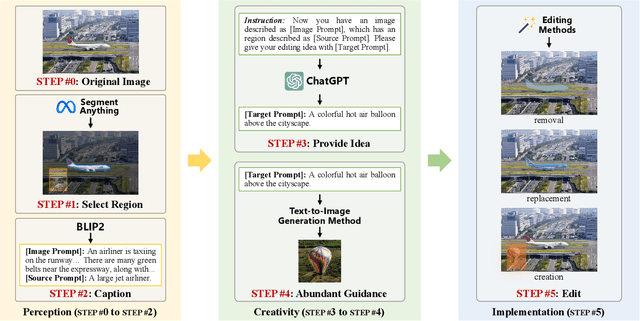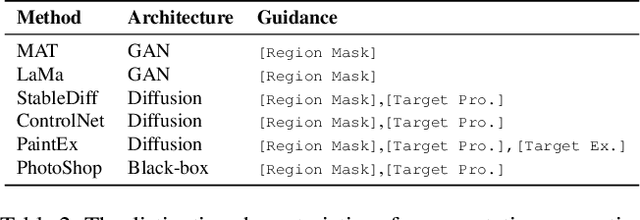Xinying Zhao
Rethinking Image Editing Detection in the Era of Generative AI Revolution
Nov 29, 2023



Abstract:The accelerated advancement of generative AI significantly enhance the viability and effectiveness of generative regional editing methods. This evolution render the image manipulation more accessible, thereby intensifying the risk of altering the conveyed information within original images and even propagating misinformation. Consequently, there exists a critical demand for robust capable of detecting the edited images. However, the lack of comprehensive dataset containing images edited with abundant and advanced generative regional editing methods poses a substantial obstacle to the advancement of corresponding detection methods. We endeavor to fill the vacancy by constructing the GRE dataset, a large-scale generative regional editing dataset with the following advantages: 1) Collection of real-world original images, focusing on two frequently edited scenarios. 2) Integration of a logical and simulated editing pipeline, leveraging multiple large models in various modalities. 3) Inclusion of various editing approaches with distinct architectures. 4) Provision of comprehensive analysis tasks. We perform comprehensive experiments with proposed three tasks: edited image classification, edited method attribution and edited region localization, providing analysis of distinct editing methods and evaluation of detection methods in related fields. We expect that the GRE dataset can promote further research and exploration in the field of generative region editing detection.
Progressive Open Space Expansion for Open-Set Model Attribution
Mar 13, 2023Abstract:Despite the remarkable progress in generative technology, the Janus-faced issues of intellectual property protection and malicious content supervision have arisen. Efforts have been paid to manage synthetic images by attributing them to a set of potential source models. However, the closed-set classification setting limits the application in real-world scenarios for handling contents generated by arbitrary models. In this study, we focus on a challenging task, namely Open-Set Model Attribution (OSMA), to simultaneously attribute images to known models and identify those from unknown ones. Compared to existing open-set recognition (OSR) tasks focusing on semantic novelty, OSMA is more challenging as the distinction between images from known and unknown models may only lie in visually imperceptible traces. To this end, we propose a Progressive Open Space Expansion (POSE) solution, which simulates open-set samples that maintain the same semantics as closed-set samples but embedded with different imperceptible traces. Guided by a diversity constraint, the open space is simulated progressively by a set of lightweight augmentation models. We consider three real-world scenarios and construct an OSMA benchmark dataset, including unknown models trained with different random seeds, architectures, and datasets from known ones. Extensive experiments on the dataset demonstrate POSE is superior to both existing model attribution methods and off-the-shelf OSR methods.
 Add to Chrome
Add to Chrome Add to Firefox
Add to Firefox Add to Edge
Add to Edge